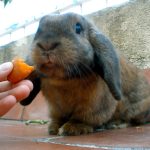6.3 Gustar y verbos similares
6.3 Gramática: Gustar y verbos similares
We have seen GUSTAR here and there already, and you may have noticed that it conjugates differently than our usual AR-verbs.
For example: To say “I like,” we do not say “yo gusto”; we say “me gusta.”
The literal translation is that: “Something” is pleasing to me.
The sentence structure is different because instead of someone doing something, something is happening to someone.
PASO 1: Pick your pronoun (indirect)
| To me | Me | To us | Nos |
| To you (familiar) | Te | To you all (Spain) | Os |
| To him
To her To you (formal) |
Le | To them
To you all (Latin America) |
Les |
PASO 2: GUSTA or GUSTAN
You will choose which form of GUSTAR to use based on what follows it (Singular or Infinitive):
Ejemplo:
!Atención!
Gusta – Singular noun:
Me gusta el café. I like coffee.
NOTE: If you use a noun, it must be accompanied by its definite article (el or la)
Gusta – Infinitive(s)/Verb:
¿Te gusta *comer en restaurantes? Do you like to eat in restaurants?
*If you use a verb, leave it in the infinitive (do not conjugate). You can list as many as you like!
¿Te gusta desayunar, almorzar y cenar en tu casa?
Do you like to eat breakfast, lunch, and dinner at your house?
!Atención!
Gustan – Plural noun:
Me gustan los tacos al pastor. I like tacos al pastor.
¿Te gustan las hamburguesas? Do you like hamburgers?
NOTE: If you use a noun, it must be accompanied by its definite article ( los or las).
Ejemplos:
1. ¿Te gusta la fruta o la ensalada mucho?
Me gusta mucho la fruta. I like fruit a lot.
2. ¿Qué no te gusta?
No me gusta la comida rápida. I don’t like fast food.
3. ¿A ellos les gustan los tacos al pastor?
Sí, a ellos les gustan mucho los tacos al pastor. Yes, they like al pastor tacos a lot.
“AAAAAAdditional information” |
The proposition A + noun or pronoun may be used to EMPHASIZE or SPECIFY the name of the person referred to by the indirect object pronoun.
| NEVER use YO or TÚ with the verb GUSTAR (and similar verbs) |
|||
| A mí | Me | A nosotros | Nos |
| A ti | Te | A vosotros | Os |
| A él A Jaime A mi hermano A ella A María A mi amiga A usted |
Le | A ellos A ellas A Pedro y a Lupe A mis amigos A mis padres |
Les |
Actividad # 1
PASO 1: ¿Te gusta o no? Respond to the following questions about what you like and like to do.
1. ¿Te gusta el café?
2. ¿Te gusta la comida rápida?
3. ¿Te gustan los refrescos?
4. ¿Te gustan los tacos al pastor?
5. ¿Te gusta cenar en restaurantes?
6. ¿Te gusta comer sobras?
7. ¿Te gustan los helados y las galletas?
PASO 2. ¡Vamos a hablar! Use the questions in PASO 1 to initiate a conversation with a partner.
Use the following reactions to help you continue the conversation:
AGREEING: Me too / Me neither
- A mí también => Me too (use when agreeing with a positive statement).
- Me gusta la leche. “¡A mí también!” (I like milk too )
- A mí tampoco => Me neither (use when agreeing with a negative statement).
- No me gusta la leche. “¡A mí tampoco!” (I don’t like milk either )
DISAGREEING: I do / I don’t
- A mí, sí. => I do (use when disagreeing with a negative statement).
- No me gusta la leche. “¡A mí, sí!” (Well, I like milk.)
- A mí, no => I don’t (use when disagreeing with a positive statement).
- Me gusta la leche. “¡A mí, no!” (Well, I don’t like milk.)
 Actividad # 2
Actividad # 2
Los gustos. Use clues in each sentence to determine which Indirect Object Pronoun is needed and which form of GUSTAR is appropriate.

1. A la profesora ____ __________ cocinar mucho.
2. ¿A ti _____ __________ las hamburguesas?
3. A mi familia _____ ________ salir a comer en restaurantes.
4. A Pepe y Lupe _____ _________ desayunar en Mcdonalds.
5. ¿A ustedes _____ _________ merendar frutas?
6. ¿A ti _____ _________ los sándwiches de pavo?
7. A ellos no _____ _______ beber refrescos.
8. A mis amigas y a mí _____ ________ la pizza.
9. A Pedro y a José no _____ ________ ir a los bares.
10. A nosotros _____ ________ la comida picante.
¡Inténtalo!
Otros verbos como GUSTAR
*The following verbs are conjugated just like GUSTAR*
| aburrir | to bore |
| caer bien / mal | to (not) get along well with |
| dar asco | to be put off |
| disgusta | to be upset |
| doler | to hurt |
| encantar | to love, like a lot |
| faltar | to lack, be missing; to be in need of |
| fascinar | to fascinate, to be fascinated by |
| hacer falta | to miss; to need |
| hacer gracia | to amuse |
| molestar | to bother, to be bothered |
| importar | to care about; to matter, to be important to |
| interesar | to interest, to be interested by |
| parecer | to seem |
| preocupar | to worry, to be worried of |
| quedar | to be left over; to fit (clothing) |
| sorprender | to surprise; to be surprised of |
Remember the formula:
(“A”dditional information) + I.O.P. + Verbo + Sujeto
|
|||
|
“A” so-and-so A + prepositional pronoun, name, or title (A mi, a ti, a usted, a él, etc.) (A Ramón) (A Sofia y a mi) (A mis padres) (A Lupe y a Renata) *Additional information is “a” optional, helps emphasize and/or clarify |
Me => Nos Te => Os Le => Les *This pronoun is required |
AR Verbs: -a / -an ER & IR Verbs: -e / -en *Only use third-person conjugations Singular: With infinitives (no matter how many) Plural: With plural nouns ONLY |
Infinitive *Do not conjugate -O- Noun *When using a noun, you need to use its DEFINITE article (el, la, los, las) |
Ejemplos:
Me fascinAN las películas extranjeras.
I love foreign films.
Mi familia me hace mucha falta.
I miss my family.
A mí me faltAN dos clases para graduarme.
I need two more classes to graduate.
Esa camisa me queda bien.
That shirt fits me well.
 Actividad # 3
Actividad # 3
Mi restaurante favorito. Fill in the blanks using verbs like GUSTAR to complete the paragraph.
| Aburrir to bore Encantar to love (things) to really like
Faltar to lack Fascinar to fascinate; to really like Importar to matter Interesar to interest Molestar to bother; to annoy Quedar to remain; to have left |


Mi restaurante favorito: SumoMaya
A mis amigas y a mí _____ _____ (encantar) el restaurante mexicano-japonés SumoMaya.A mí _____ _____ (fascinar) el guacamole y el sushi. A mis amigas_____ _____ (molestar) la comida picante y por eso ellas siempre piden los platosjaponeses. Al chef _____ _________ (importar) usar ingredientes frescosy a nosotros _____ _____. (interesar) saber (to know) cuáles son los ingredientesde cada plato. El servicio es excelente y muy rápido, pero una vez, cuando salióla comida (food came out), yo le dije (told) al mesero, “Perdona, pero a nosotros_____ _________ (faltar) los tacos de pescado,” él se disculpó (apologized) ynos los trajo (brought them) inmediatamente.¡Qué buen servicio!A mi esposo _____ __________ (gustar) los precios económicos de este restaurante y las porciones grandes.Siempre a nosotros (always)_____ _________ (quedar) muchas sobras! |
¡Inténtalo!
 Actividad # 4
Actividad # 4
Preguntar. With a partner, take turns asking questions about the following people. Follow the example.
Ejemplo: fascinar / a la profesora USE THIS: creer que (use to ask/give an opinion)
E1: ¿Qué crees que le fascina a la profesora?
E2: Pues, no sé. Creo que le fascina cocinar y bailar.
- Preocupar / a tus padres
- Encantar / a tu media naranja
- Importar / a tu mejor amigo
- Hacer falta / a ti
- Molestar / a la profesora
- Aburrir / a los estudiantes
 Actividad # 5
Actividad # 5
Encuesta. Complete the table below with your classmate’s information. Be prepared to share with the whole class.
Start the conversation with, “¿Te gusta (n) / encanta (n) / fascina (n) _____ ?”
Encuentra a alguien que / a quien (Find someone who )
| Nombre (Name ) | |
| Le gusta hablar español | |
| Le encanta nadar | |
| Le fascinan las frutas | |
| Le encanta escuchar hip-hop | |
| Le aburren las películas románticas | |
| Le encanta jugar videojuegos | |
| Le molesta hacer tareas | |
| Le interesa la política | |
| Le falta un semestre para graduarse | |
| No le gustan las verduras | |
| Le preocupa su futuro |
Actividad # 6
¡Vamos a contar! Use ME QUEDA or ME QUEDAN to say how much / how many items you have left.
1. Si (if) tienes nueve manzanas y comes tres, ¿cuántas manzanas te quedan?

2. Si tienes dos zapatos y pierdes (loose) uno, ¿cuántos zapatos te quedan?

3. Si tienes veinticuatro peces y mueren (died) once, ¿cuántos peces te quedan?

4. Si tienes dos zanahorias y le das (you give one) una a tu conejito, ¿cuántas zanahorias te quedan?

5. Si tienes tres novios y rompes (break up) con uno, ¿cuántos novios te quedan?

Actividad # 7
¿Cuánto te gusta? For each of the activities below, say how much you like it using the following expressions:
No me interesa nada (I’m not interested) Me gusta (I like it)¡Me encanta! (I love it! ) |
- Leer novelas gráficas
- Jugar videojuegos
- Limpiar la casa
- Viajar
- Ir al cine
- Salir con mis amigos
- Cocinar
- Trabajar como voluntario/a
 Actividad # 8
Actividad # 8
¡Hablemos! With a partner, take turns asking and answering the following questions.
- ¿Qué comes normalmente para el desayuno?
- ¿Qué comidas te gustan más para la cena?
- ¿Nombra DOS verduras (vegetales) que NO te gustan? Y ¿Por qué?
- ¿Qué tipo de comida te fascina?
- ¿Te gusta cocinar? ¿Qué comidas preparas para tu familia o tus amigos?
- ¿Qué cosas te molestan?
- ¿Cuántas clases te faltan para graduarte?
- ¿Qué país hispano te interesa más? y ¿por qué?
- ¿Qué te encanta de tu media naranja (better half) (esposa, novio)?
 Actividad # 9
Actividad # 9
La comida. Listen to Ángela and David in groups and respond to the following questions.
Ángela (Chile) talks about food and some typical Chilean products.
- ¿Qué comidas come Ángela para el desayuno?
- Menciona DOS comidas o productos típicos chilenos.
- ¿Por qué prefiere Ángela la leche en polvo?
- ¿A qué hora come Ángela su cena?
- ¿Le gusta cocinar a ella?
David (Colombia) talks about food and some typical Colombian foods.
- ¿Qué come David para el desayuno y a qué hora?
- ¿David compra su almuerzo?
- ¿Por qué el entrevistador piensa que la dieta de David es muy básica?
- ¿Qué es el arequipe?
- ¿Dónde compra David los productos colombianos?
Actividad # 10
Y ahora ustedes…
Paso 1. Write a list of foods or food products that represent your country (or region) in your opinion.
Paso 2. Think about ONE food you like and ONE food you don´t like to eat and why.
Paso 3. Prepare the visuals for Paso 1 and Paso 2. (they can be real or pictures).
Paso 4. Prepare an oral presentation (or video recording) explaining and showing what foods represent your country or region and what you like and don´t like (see Paso 1 and 2).
Presentación de la profesora. View the instructor´s video to understand what is expected.
Paso 1. Write a list of foods or food products that represent your country (or region), in your opinion.
Ejemplo:
- el sancocho
- la arepa
- la bandeja paisa
- los plátanos
- la yuca
- el chorizo
Paso 2. Think about ONE food you like and one you don’t like to eat.
- “Me GUSTAN las frutas.”
- “No me GUSTA el pan.”

